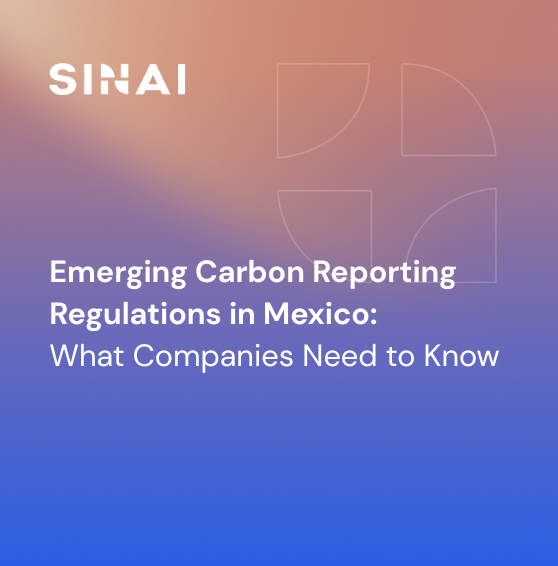
Leading the Way to Transportation Sector Decarbonization
Over the past few months, a number of articles (see 1, 2) have celebrated the drastic improvement to air quality as people around the world are no longer moving around the way we used to due to the coronavirus, commonly referred to as Covid-19. One byproduct of so many countries and states around the world having implemented various shelter-in-place orders and travel restrictions across international borders, is the overall decrease in transportation-related greenhouse gas (GHG) emissions, especially from air travel and passenger vehicles. Even commercial transportation has been affected to some degree, though preliminary data from the Americas and Europe show that commercial trucks have seen the lowest decline across all types of commercial vehicles. This same article points to the stability in the trucking industry as a healthy indicator that the demand for the transportation and logistics sector is stable (or perhaps even increasing).
So what does this mean in the broader context of climate action and, in particular, emissions reduction opportunities in the transportation sector? According to the World Resources Institute, transportation is the fastest-growing GHG emitting sector globally and made up over 24% of GHG emissions in 2016. As of 2017, transportation became the largest GHG emitting sector in the United States, which is the country with the highest transportation emissions globally. Finally, >70% of the global transport emissions come from road vehicles, which also happens to be the mode of transportation that accounts for 80% of the rise in emissions over the last four decades.
It’s hard to argue with improved air quality and reducing respiratory illnesses. Yet, it’s clear that reducing transportation GHG emissions at the expense of our economy would not be deemed sustainable development. Given the current thriving demand for transportation and logistics companies, these companies are well-positioned to lead the way in decarbonizing the transportation sector’s impact. Five possible strategies are:
1. Set a science-based GHG emissions target.
Ambitious emissions targets facilitate long term competitive advantages. Internal benefits include cost and operational efficiency due to innovation and transformation of business strategy and structure. External benefits relate to the company preemptively responding to public policy and improving brand credibility, consumer perception, and investor confidence who are increasingly incorporating climate risk mitigation as a part of their evaluation criteria.
2. Invest in energy efficiency and clean energy.
Energy efficiency projects may not be news grabbing headlines but they improve the bottom line and the avoided costs can provide a positive feedback loop to pay for future efficiency opportunities, which then yield additional savings. Furthermore, some energy efficiency opportunities such as lighting and building systems improvements can lower energy bills while improving working conditions and employee performance. Clean energy investments such as wind and solar have reached cost parity compared to traditional fossil fuel sources in many markets and can provide good long term electricity pricing stability depending on the region and project cost structure.
3. Establish a baseline of current fleet fuel economy and GHG emissions.
Many jurisdictions around the world including the E.U., California, and Oregon in the U.S., British Columbia, Canada, and Brazil all have variations of low carbon fuel standard policies that focus on decarbonizing the transportation sectors. Several other jurisdictions around the world are having discussions around forthcoming policies to lower transportation emissions through more stringent fuel-related emissions standards. Companies cannot effectively respond to public policies without a data-driven understanding of their own fleets and transportation-related emissions. Establishing a baseline allows a company to leverage funding opportunities (next strategy discussed) and planning for longer-term fleet decarbonization (last strategy discussed below).
4. Take advantage of funding opportunities in regional markets to electrify fleets.
There are millions of dollars of funding currently available for fleet decarbonization and most of this funding is available at the regional and not federal level. Companies that are growing their fleet size to respond to increased market demand for commercial transportation or are considering what technologies to invest in as a part of asset turnover should take this opportunity to pilot a small electric vehicle (EV) fleet. Installation of EV charging stations and operationalizing the EV charging network to take advantage of local electricity prices and demand charges both take some time to optimize so it’s best to start with a pilot project and take advantage of available incentives now.
5. Identify short and long-term strategies to transition to a zero-emissions transportation fleet.
With almost 190 signatories to the Paris Agreement and increasing scrutiny over the transportation sector’s growing emissions, transportation decarbonization is a growing area of concern for regulators, the public, and investors thinking about climate risk alike. Companies that start planning and implementing changes to their fleets now will avoid stranded assets and improve public perception of their social responsibility while becoming more competitive.
The strategies laid out above are meant to provide a sampling of opportunities available to all transportation organizations but especially transportation and logistics sector entities whose businesses are least adversely impacted by Covid-19. Given the diverse nature of the strategies listed above, companies would be best served by a tool that helps with scenario modeling and methodology to normalize all climate-related projects. For more information, visit Sinai Technologies for a software platform that can help companies on their decarbonization journey.
Sinai Technologies Inc. is helping companies to mitigate climate change by enabling more intelligent carbon emission measurement, monitoring and trading. We are building the world’s first platform-as-a-service to measure, price and evaluate carbon risk, using science-based methodologies and artificial intelligence. For more information and to schedule a demo, visit https://www.sinaitechnologies.com/request-a-demo.
References
1. “Air pollution falls by unprecedented levels in major global cities during coronavirus lockdowns.” (April 23, 2020). https://www.cnn.com/2020/04/22/world/air-pollution-reduction-cities-coronavirus-intl-hnk/index.html
2. Cities around the world. “It's positively alpine!': Disbelief in big cities as air pollution falls.” (April 11, 2020). https://www.theguardian.com/environment/2020/apr/11/positively-alpine-disbelief-air-pollution-falls-lockdown-coronavirus
3. Geotab Data & Analytics Team. (May 7, 2020). The impact of COVID-19 on commercial transportation and trade activity. Retrieved from https://www.geotab.com/blog/impact-of-covid-19/.
4. U.S. Environmental Protection Agency (EPA). https://www.epa.gov/greenvehicles/fast-facts-transportation-greenhouse-gas-emissions.
April https://www.eia.gov/totalenergy/data/monthly/#environment
5. Shiying Wang and Mengpin Ge. (October 16, 2019). “Everything You Need to Know About the Fastest-Growing Source of Global Emissions: Transport.” WRI. Retrieved from https://www.wri.org/blog/2019/10/everything-you-need-know-about-fastest-growing-source-global-emissions-transport.
6. Sinai Technologies https://www.sinaitechnologies.com/











